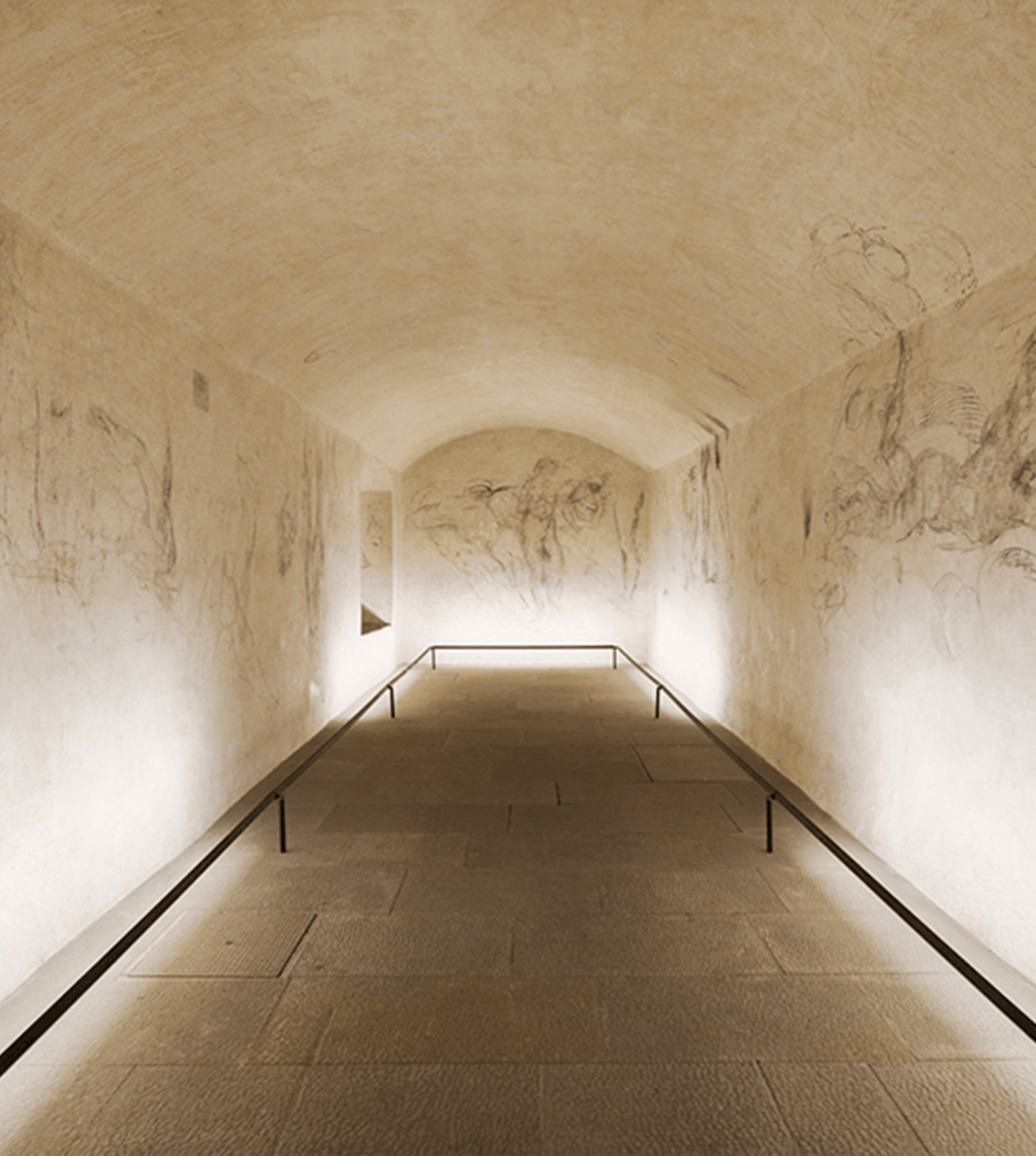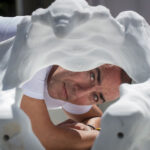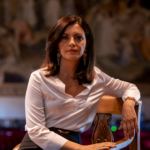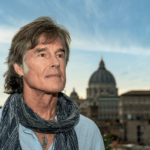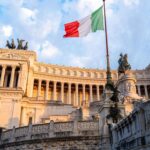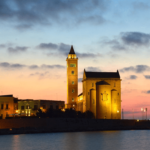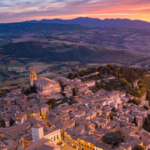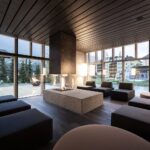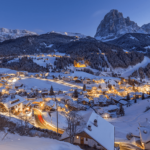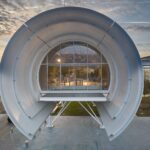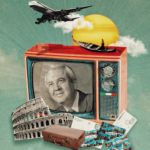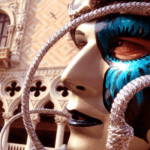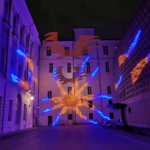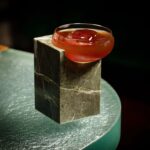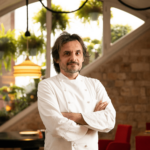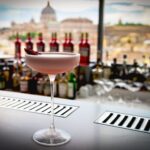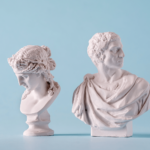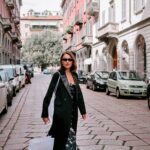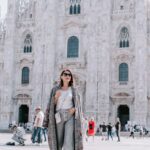MICHELANGELO’S SECRET ROOM OPENS TO VISITORS UNTIL MARCH 30TH, 2024 Almost 50 years after its discovery (it was 1975), now Michelangelo’s secret room, a small room containing a series of drawings attributed to Buonarroti, which can be accessed from the New Sacristy, inside the Museum of the Medici Chapels , will be accessible to the public.
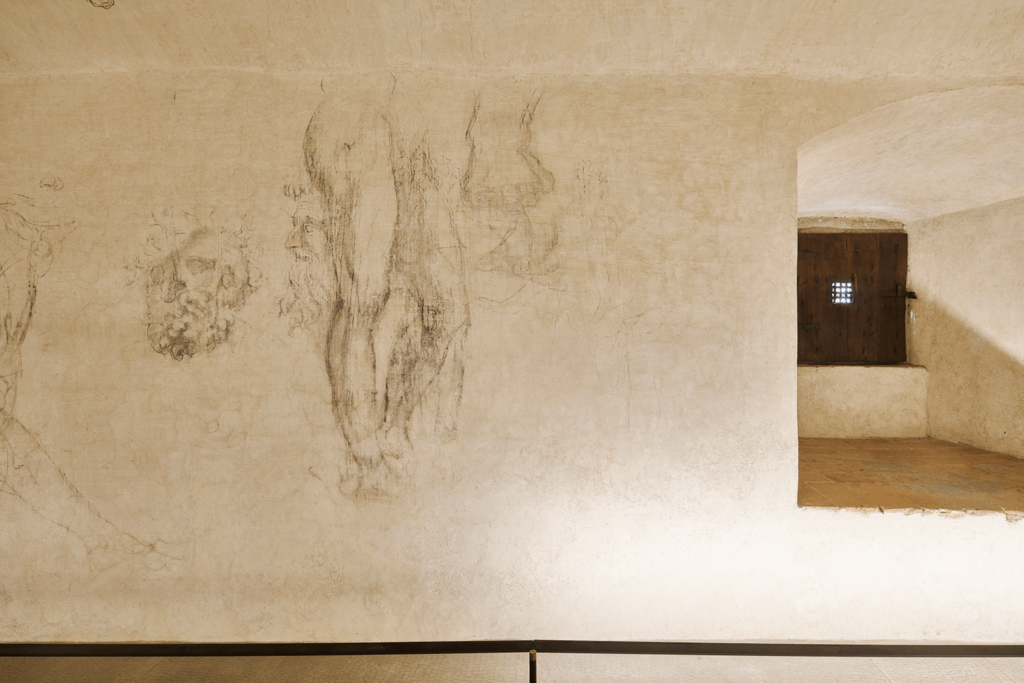
Throughout history, artists have sought seclusion and inspiration in secret rooms, hidden chambers, and concealed studios. These clandestine spaces provided sanctuary for creativity, allowing artists to escape the distractions of the outside world and delve into their work without interruption. From renowned painters to celebrated writers, the allure of secret rooms has sparked imagination and fueled artistic expression, creating an enigmatic legacy that continues to captivate and inspire…this is Michelangelo’s.
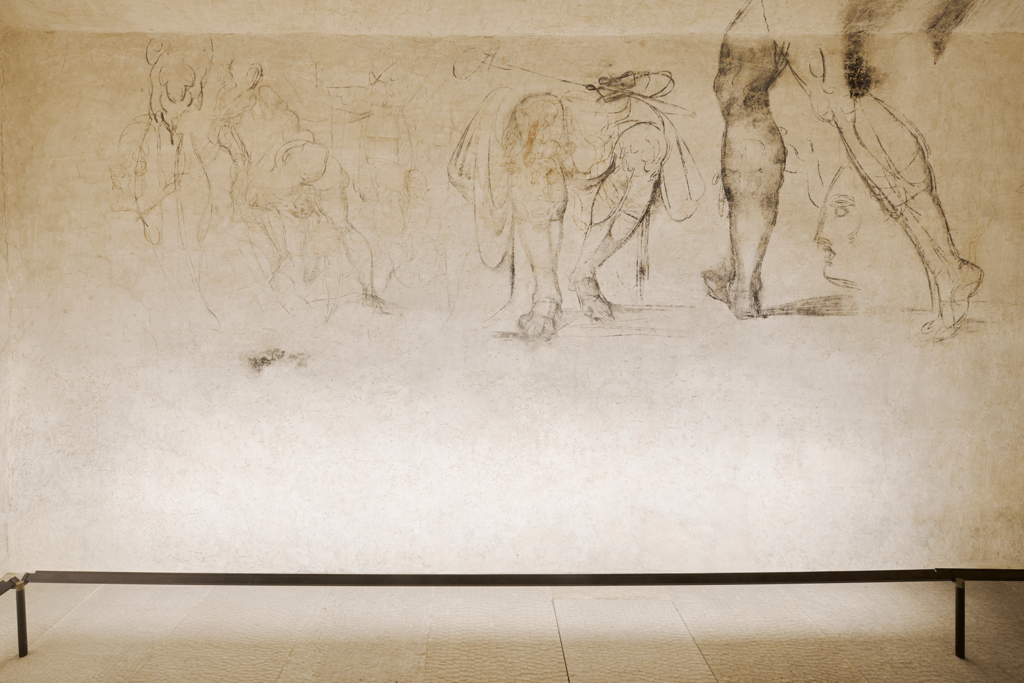
The imminent and long-awaited opening to the public of the Secret Room, which has never been accessible to the public in a regulated manner until now, is also made possible thanks to the monitoring that will be conducted in the coming months, in agreement with the Opificio delle Pietre Dure for limited groups of up to 4 people at a time, in order to protect the drawings and maintain adequate conservation conditions, essential to safeguard the precious artefacts. The limited number of presences per time slot is due to the need to alternate the period of exposure to LED light with prolonged periods of darkness. In 2018, thanks to the collaboration of the Ministry of Culture with Lottomatica, the maestro Mario Nanni, assisted by the architect Maria Cristina Valenti, in those years working at the Bargello Museums, also took care of the new LED lighting of the Secret Room.
“The conclusion of the works on the New Exit and the adaptation of the Museum of the Medici Chapels to safety regulations will allow Michelangelo’s secret room to be opened– a place of extraordinary charm, but very delicate due to the location of the narrow space in the museum itinerary and for the protection of the charcoal drawings on the walls.”
— Massimo Osanna,
Director General of Museums at the Ministry of Cultural Heritage, Activities and Tourism
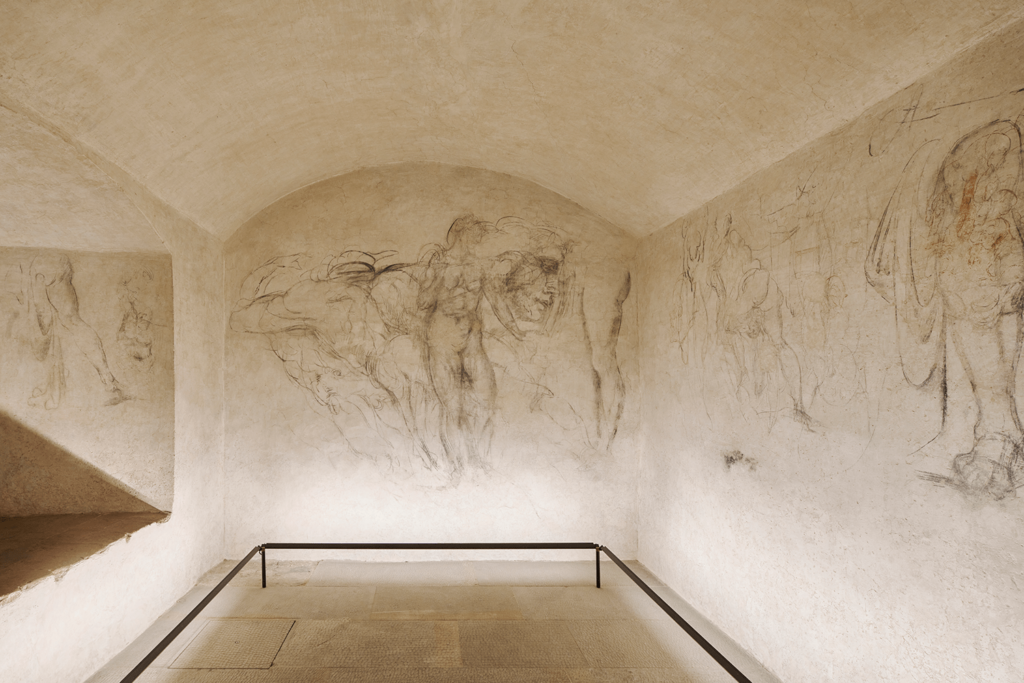
“It has been a long, constant and patient work that has involved different professionals and I would like to thank all the staff of the Bargello Museums who have worked with me in recent years towards this objective – declared Paola D’Agostino, director of the Bargello Museums. Among them I owe particular thanks to Francesca de Luca, art historian and manager of the Medici Chapels and Casa Martelli and to Benedetta Cantini, restorer at the Bargello Museums for the careful care they take of this extraordinary environment. My deep gratitude goes to the colleagues of the Opificio delle Pietre Dure who share with competence and passion many restoration, diagnostic, monitoring and research projects on some masterpieces of the Bargello Museums.”
Sign up for the LF Italy newsletter
Access The Rare and Wonderful, LF Italy’s monthly newsletter. Get our latest interviews and discoveries in wellness, travel, innovation, food & drink, unique stays and more.
“This very small environment is truly unique due to its exceptional evocative potential. Its walls seem to barely contain numerous sketches of figures, mostly of monumental format, traced by signs that attest to great clarity of design – commented Francesca de Luca, curator of the Museum of the Medici Chapels -. These are accompanied by studies, variously accurate or summary, of anatomical details, faces and unusual poses. Not in all the drawings is the same sustained qualitative tension of Michelangelo’s graphics perceptible, which according to the reconstruction of Paolo dal Poggetto, discoverer of this room in 1975, could have been exercised here in 1530 during his inaction to save himself from the wrath of Pope Clement VII Medici due to his activity as head of fortifications with the republican government, which had expelled the family in 1527. However, this place allows today’s visitors the unique experience of being able to come into direct contact not only with the creative process of master, but also with the perception of the formation of his myth of divine artist, taken as a model by his contemporary colleagues and by the young people enrolled in the Academy of Drawing Arts, of which Michelangelo was named “Father and Master”, who in 1563 established the its seat in the Sacristy”.
Michelangelo’s Secret Room: The story
It was November 1975 when Paolo Dal Poggetto, then director of the Museum of the Medici Chapels, commissioned the restorer Sabino Giovannoni to carry out some cleaning tests in a narrow corridor beneath the apse of the New Sacristy, on the occasion of a preliminary inspection in search of a adequate space for the creation of a new museum exit.
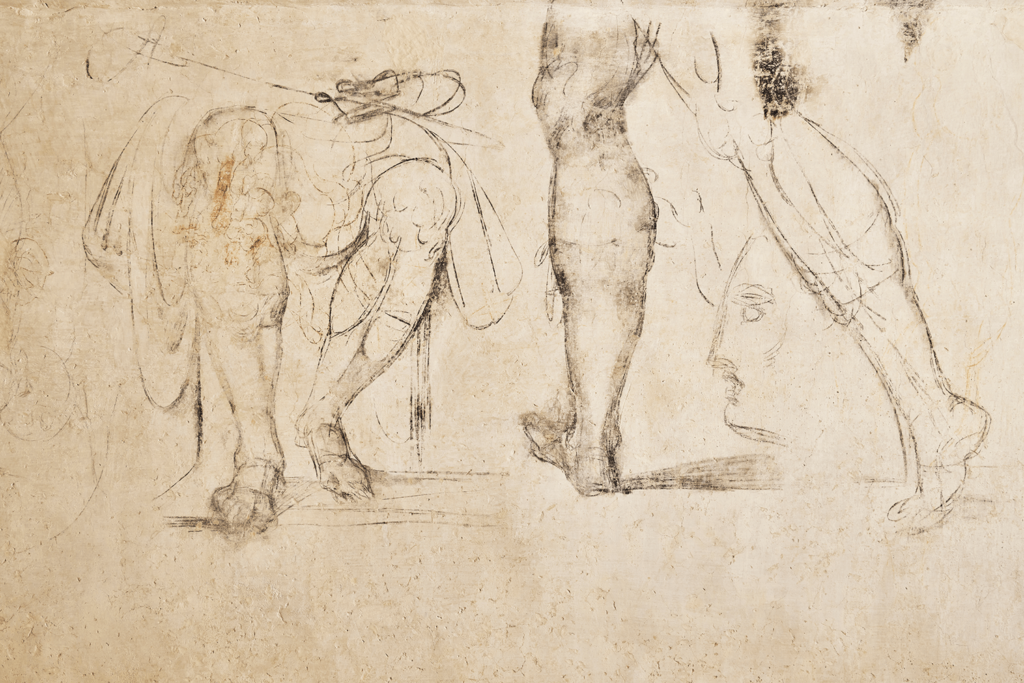
The small room, 10 meters long by 3 meters wide, 2.50 meters high at the top of the vault, had been used as a charcoal deposit until 1955 and then unused, remaining closed and forgotten for decades, under a trap door completely covered by wardrobes. , furniture and furnishings piled up. It is here, during some tests on the walls, that the restorer came across, under two layers of plaster, a series of wall drawings of figures, traced with charred and sanguine wooden sticks, of various sizes, in many cases overlapping, which from Poggetto attributed the majority to Michelangelo. The then director hypothesized that the artist had taken refuge in the small environment in 1530, when the Prior of San Lorenzo, Giovan Battista Figiovanni, hid him from the revenge of Pope Clement VII, enraged because the artist – during the period in which the Medici was driven out of the city – he had served as supervisor of the fortifications for the short period of republican government (1527-1530). Having obtained the family’s forgiveness, after about two months – which according to the reconstruction should be between the end of June and the end of October 1530 – Michelangelo finally returned free and resumed his Florentine duties again, until he definitively abandoned the city in 1534 towards Rome. The drawings, still the subject of study by critics, according to Dal Poggetto’s thesis were made during the artist’s period of “self-imprisonment” who used the walls of the small room to “sketch” some of his projects including works from the New Sacristy, such as the legs of Giuliano de’ Medici, Duke of Nemours, quotations from antiquity, such as the head of the Laocoön, and projects referable to other sculptures and paintings.
How to access the Secret room
The secret room will be accessible exclusively by reservation, to a maximum of four people per accompanied group, up to a limit of 100 people per week. It will be open on Mondays (at 3pm, 4.30pm and 6pm), on Wednesdays (at 9am, 10.30am, 12pm, 1.30pm, 3pm, 4.30pm, 6pm) , Thursday (at 9:00, 10:30, 12:00, 13:30, 15:00), Friday (at 15:00, 16:30 and 18:00) and Saturday (at 9:00, 10:30, 12:00, 13:30, 15:00, 16:30, 18:00). The maximum stay inside the room will be 15 minutes, accompanied by the Museum security staff. Since to access the room it is necessary to go down a narrow staircase, the room is not wheelchair accessible and, for safety reasons, not open to children under 10 years of age. The entrance ticket is 20.00 euros per person (2.00 euros for concessions; free for under 18s) plus the costs of the compulsory reservation (3 euros) and the ticket price entry to the Medici Chapel Museum (10 euros full, 3 euros reduced until 15 December 2023). A total of 30.00 euros plus the mandatory reservation for full tickets and 5 euros plus the 3 euro mandatory reservation for reduced tickets.
For tickets and visiting information see Musei dei Bargello website
LINK TO https://www.bargellomusei.beniculturali.it/musei/2/medicee/
Read how Artist Lorenzo Quinn vividly recalls the moment in 1989 when he felt that he had created his first genuine work of art.
Image courtesy of Francesco Fanfani

